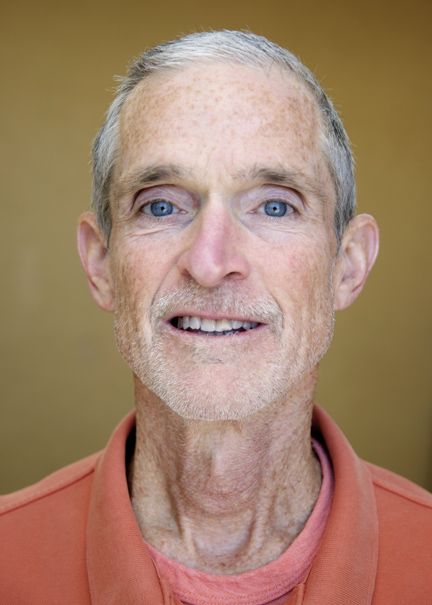Student of the Month: Ankita Jasuja
Dayalan: Tell us a bit about yourself, what you like to do, work, and/or things you are most interested in and passionate about, and anything else you may wish to share.
Ankita: Hari OM! My name is Ankita, in Sanskrit it means “One with auspicious marks.”
I was born and raised in India and moved to the USA in 2013. I’ve studied electronics and communication engineering in my undergrad and have worked in different industries both in India and USA.
In my free time I like going for long walks in nature and my favorite spot is Tilden park in Berkeley. Besides this, I indulge myself in pursuing my hobbies and interests like taking weekly yoga classes, riding my bike, and cooking vegan & vegetarian meals. I have followed a vegetarian diet since childhood and also relish vegan food.
For a long time, I spent hundreds of hours imbibing knowledge regarding my varied passion towards sustainable and more compassionate being, devoting time to learn the various practices of ayurveda, nutrition science, spirituality, learning food and farm industry practices, and animal welfare. I am trying to bring more and more conscious living choices in my lifestyle and I’m trying to replace the automatic ones passed by fast-paced modern life.
I believe one day I will contribute this back to the society and help our future generation to come back to their roots and realize the health benefits and inner peace that can be ingrained by practicing Yoga.
Dayalan: Who has inspired you most in your life as a teacher(s) or mentor(s)?
Ankita: There are so many brilliant teachers in the world and there’s so much to learn from each one of them. I’m taking a few classes every week at IYSF apart from my YTT training and meeting so many inspirational teachers.
Currently I’m enjoying Diana Meltsner’s Therapeutic Chair yoga class at IYSF. It has been kind of revolutionary for me. It gave me an awareness regarding how yoga can be accessible to every age, body shape, or even for someone recovering from an injury, or just looking for more ways of mobility and relaxation. She’s a phenomenal teacher.
I love my Wednesday and Friday morning dose of Mia Velez’s mixed level yoga classes which are a wholesome package for mind & body. I love how her classes help to ground my body and mind into the present moment and prepare me for meditation.
I’m also enjoying talks by Swami Ramananda, Divyananda Ma and Karunanda Ma; kirtans with Astrud Castillo and noon meditations with Snehan Born at IYSF.
Out of my personal interest in specifically understanding Indian food and nutrition, I love listening and reading books of Rujuta Diwekar (India’s leading sports science and nutrition expert) as she emphasizes a blend of traditional food wisdom and modern nutritional science for a healthy body and mind.
Dayalan: What has been one of the most valuable learning experiences you have had?
Ankita: I believe working through difficulties in my life has taught me many lifelong valuable experiences. All of the experiences have been valuable for my growth till now. But if I have to pick one, I would give my first 200-hour BIPOC YTT with Integral Yoga SF a complete credit. The most exciting part of the training was learning the difference between knowing yoga and understanding yoga. The true learning for me out of this training was to understand that yoga is just not about a perfect body or about perfectly memorizing sutras and mantras in Sanskrit but the value that a yoga practice and community bring to your life. This training certainly has increased my quest to dive deeply into it.
Dayalan: What drew you to yoga and meditation?
Ankita: Listening to the experiences of a few friends. Also, I’m always captivated by the music and chanting and I find it to be a profound way of being joyful.
Dayalan: What benefits have you found in your personal practice?
Ankita: It is a work in progress. Overall, I would say, it has benefitted me at all levels, but I’ll have to practice more insightful self-observation to explain the benefits more clearly.
Dayalan: I understand you are in the 1st BIPOC Teacher Training offered with Integral Yoga Institute. How has that experience been?
Ankita: I must say I’m fortunate enough to be part of it. Along with deepening my own personal practice for yoga I had a strong desire to deepen my understanding of yoga as a whole and no better place other than with my wonderful BIPOC community. I will offer a brief insight; maybe it can inspire others to be part of it in the upcoming years.
In the beginning we all got books on Hatha yoga, science of breath, meditation, the yoga sutras, anatomy, yogic diet, breath of life, and a few others.
We explored all 8 limbs of yoga – the Yamas and Niyamas (yoga ethics), Asanas (physical postures), Pranayama (breathing practices), Pratyahara, Dharana (mindfulness), Dhyana (meditation), and Samadhi (freedom and living joyfully).
Apart from our main program teachers, Mukunda Marc Morozumi, Mia Velez, Rev. Kamala Itzel Hayward, and Arturo Peal, we also had a diverse background of speakers sharing on various topics, like cultural appropriation of yoga, yogic diet, building equity, yoga and body coalition, and a conversation about gurus. Along with hatha yoga it has also focused on other branches of yoga- Raja yoga, Karma yoga, Bhakti yoga, Jnana yoga, and Japa yoga. These are a few names to mention but there were so many subtopics shared and explored further.
Enabling conversations around yoga and race, hosting different BIPOC speakers, and focusing on healing from ancestral trauma— this part of our training has been super inspirational for me, since it has focused on celebrating diversity and wellness by making yoga accessible to everyone.
There has been consistent 1:1 support of teachers who have been highly approachable and it was very easy to reach out to them after the hours of the training through emails and appointments. There has always been a Q&A time after every session and recordings of each class have been a huge resource. Breakout room practice sessions were crucial to the learning process.
Three months already into the training and one more month to go, I feel like one of the reasons I got so much out of the experience is because I went into it with no hard expectations from training and myself. I’m taking it day by day. It really is a journey and not a destination. I will always be eternally grateful for everyone associated with this training and IYSF for providing this platform.
Dayalan: What are your future aspirations?
Ankita: I want myself to be immersed in yoga while honoring its root and also to step up and serve others while exploring my own journey and all of this while also being an animal welfare activist. I’ll continue to travel and focus on strengthening my own practice.
असतो मा सद्गमय ।
तमसो मा ज्योतिर्गमय ।
मृत्योर्माऽमृतं गमय ॥
ॐ शान्तिः शान्तिः शान्तिः ॥
Lead us from unreal to real
Lead us from darkness to the light
Lead us from the fear of death
To knowledge of immortality
OM peace peace peace







